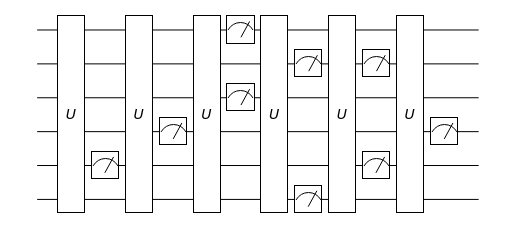Wolfram Language Paclet Repository
Community-contributed installable additions to the Wolfram Language
Kitaev Random Circuit |  |

Represents a fermionic Gaussian state | |
Represents a Gaussian-type unitary operator | |
Represents a set of quantum jump operators, which are linear compbinations of Majorana operators | |
Rancomd quantum circuit consisting of fermionic gates. | |
Calculates the Green's functions with respect to a Wick state | |
Calculates the entanglement entropy in a Wick state | |
Calculates the logarithmic negativity in a Wick state |


-μ | -t | 0 | 0 | 0 | 0 | 0 | -Δ | … |
-t | -μ | -t | 0 | 0 | 0 | Δ | 0 | … |
0 | -t | -μ | -t | 0 | 0 | 0 | Δ | … |
0 | 0 | -t | -μ | -t | 0 | 0 | 0 | … |
0 | 0 | 0 | -t | -μ | -t | 0 | 0 | … |
0 | 0 | 0 | 0 | -t | -μ | 0 | 0 | … |
0 | Δ | 0 | 0 | 0 | 0 | μ | t | … |
-Δ | 0 | Δ | 0 | 0 | 0 | t | μ | … |
… | … | … | … | … | … | … | … | … |
|
| ||||||||||||||||||||||||||||||||||||||||||||||||||
|
|
-0.2 | -1 | 0 | 0 | … |
-1 | -0.2 | -1 | 0 | … |
0 | -1 | -0.2 | -1 | … |
0 | 0 | -1 | -0.2 | … |
… | … | … | … | … |
0 | -1 | 0 | 0 | … |
1 | 0 | -1 | 0 | … |
0 | 1 | 0 | -1 | … |
0 | 0 | 1 | 0 | … |
… | … | … | … | … |
|
|
|